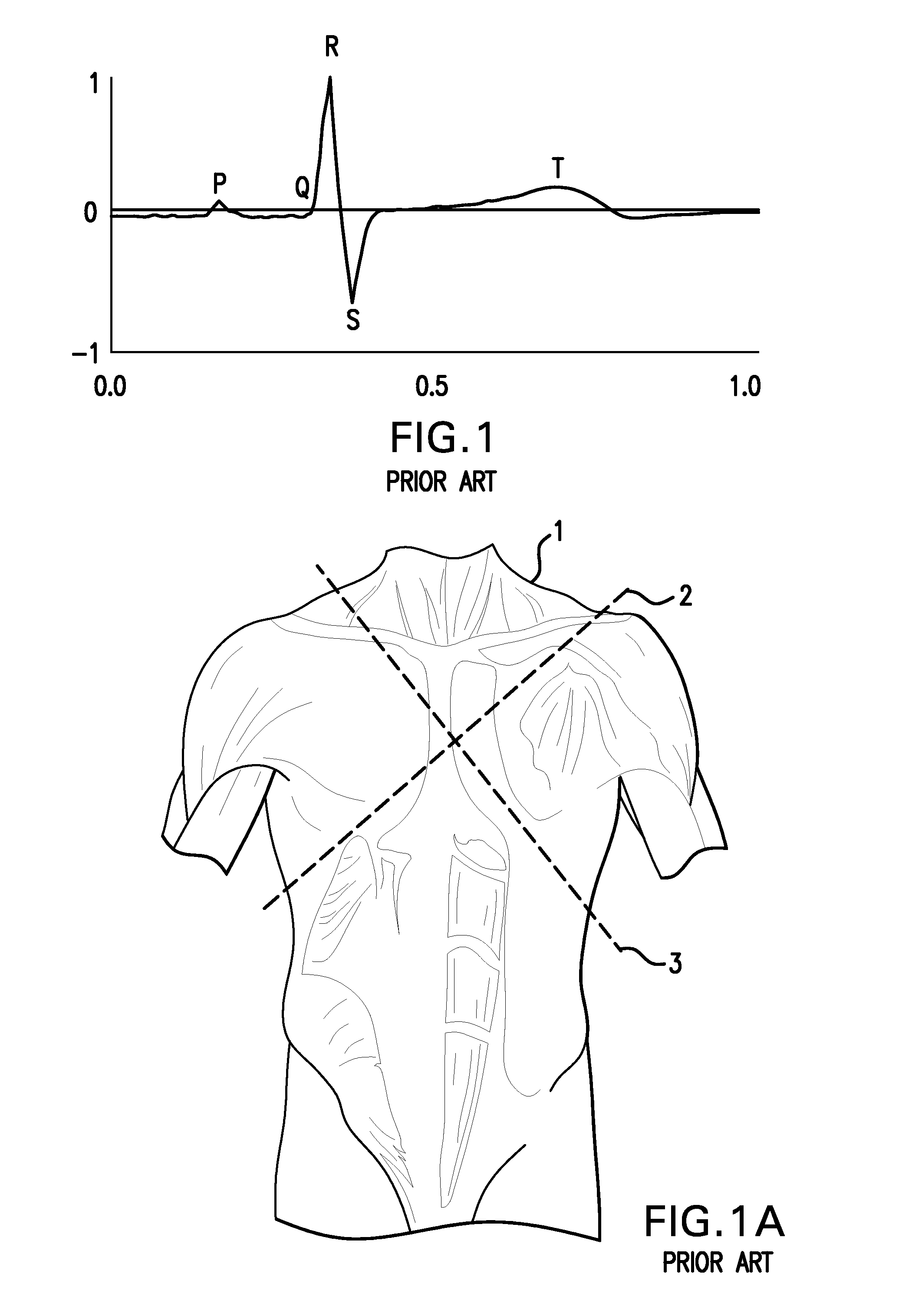Method and apparatus for measuring heart-related parameters and deriving human status parameters from sensed physiological and contextual parameters
a technology of physiological and contextual parameters and measurement methods, applied in the field of measuring heart-related parameters and deriving human status parameters from sensed physiological and contextual parameters, can solve the problems of inability to adapt to ambulatory or long-term use, high cost and cumbersomeness of devices, and inability to meet the needs of long-term use, etc., to reduce the irritation factor, reduce the interference of items, and affect the ability of wearers to recognize.
- Summary
- Abstract
- Description
- Claims
- Application Information
AI Technical Summary
Benefits of technology
Problems solved by technology
Method used
Image
Examples
Embodiment Construction
[0069]Conventional thinking in the field of cardiology / ECG is that an ECG signal must be measured across the heart, meaning with electrodes placed in two different quadrants of the heart's conventionally defined sagittal and transverse planes. A device and methodology are disclosed herein which permits the measurement of an ECG signal from certain pairs of points located within regions or areas of the human body previously considered inappropriate for such measurement. The device and methodology disclosed herein focus on the identification of certain locations on the body within the previously defined equivalence regions utilized for electrode location. Many of these electrode locations are within a single quadrant, i.e., when the electrode locations are connected geometrically directly through tissue, the line described thereby does not cross into another quadrant.
[0070]In other words, certain points within one quadrant are correlated with the electropotential of the ECG signal con...
PUM
 Login to View More
Login to View More Abstract
Description
Claims
Application Information
 Login to View More
Login to View More - R&D
- Intellectual Property
- Life Sciences
- Materials
- Tech Scout
- Unparalleled Data Quality
- Higher Quality Content
- 60% Fewer Hallucinations
Browse by: Latest US Patents, China's latest patents, Technical Efficacy Thesaurus, Application Domain, Technology Topic, Popular Technical Reports.
© 2025 PatSnap. All rights reserved.Legal|Privacy policy|Modern Slavery Act Transparency Statement|Sitemap|About US| Contact US: help@patsnap.com



